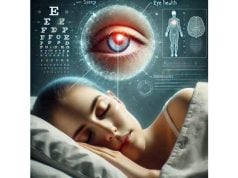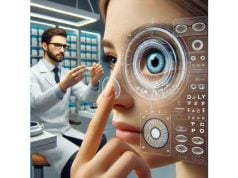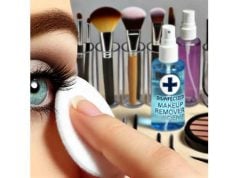
In today’s digital age, our eyes are exposed to more screens than ever before—smartphones, computers, tablets, and televisions dominate our daily lives. Along with this increased screen time comes growing concern about the potential harm of blue light emitted by these devices. Blue light, a high-energy visible light, is often blamed for eye strain, headaches, and even long-term damage to our vision. But can blue light really damage your eyes? Or is it just another modern health scare? Understanding the science behind blue light and its effects on eye health is crucial, especially as we spend more time in front of screens. This article delves into the evidence, exploring the nature of blue light, its potential risks, and practical strategies to protect your eyes from possible harm. By the end, you’ll have a clearer understanding of whether blue light is a genuine threat to your vision or a misunderstood phenomenon.
Understanding Blue Light: What Is It?
Blue light is part of the visible light spectrum, which is the range of light that the human eye can detect. It is characterized by wavelengths between 380 and 500 nanometers, making it one of the shortest and highest-energy wavelengths within the visible light spectrum. Blue light is present in natural sunlight, and exposure to it is essential for various bodily functions, including regulating our sleep-wake cycle (circadian rhythm) and enhancing alertness during the day.
The Different Sources of Blue Light
While natural blue light from the sun is beneficial, artificial sources of blue light have become more prevalent in our modern environment. These include:
- Digital Screens: Smartphones, tablets, computers, and televisions emit significant amounts of blue light. Given the amount of time people spend on these devices, they are the most common sources of artificial blue light exposure.
- LED and Fluorescent Lighting: Many energy-efficient light sources, such as LED bulbs and fluorescent lights, emit blue light. These lights are widely used in homes, offices, and public spaces, contributing to increased blue light exposure.
- Electronic Devices: Other electronic devices, such as gaming consoles, e-readers, and even some kitchen appliances, also emit blue light, although usually in smaller amounts compared to digital screens.
The Role of Blue Light in Daily Life
Blue light plays a crucial role in regulating our circadian rhythm, the internal clock that dictates our sleep-wake cycle. Exposure to blue light during daylight hours helps maintain alertness, improves mood, and enhances cognitive function. However, excessive exposure, particularly in the evening and at night, can disrupt the circadian rhythm, leading to sleep disturbances and other health issues.
The increasing use of digital devices, especially before bedtime, has raised concerns about the impact of blue light on sleep quality. Studies have shown that blue light suppresses the production of melatonin, the hormone responsible for inducing sleep, making it harder to fall asleep and reducing sleep quality.
The Good and the Bad of Blue Light
It’s important to recognize that not all blue light is harmful. In fact, exposure to blue light during the day is beneficial and even necessary for our overall well-being. However, the issue arises with prolonged exposure to artificial blue light, particularly from digital screens, which can lead to various health concerns, including digital eye strain and potential long-term effects on vision.
Understanding the balance between beneficial and harmful blue light is key to protecting eye health while still reaping the positive effects of blue light on our daily lives.
The Science Behind Blue Light and Eye Damage
The question of whether blue light can truly damage the eyes has been the subject of much scientific research. To understand the potential risks, it’s essential to delve into how blue light interacts with the eyes and the scientific evidence supporting these concerns.
How Blue Light Interacts with the Eye
When blue light enters the eye, it passes through the cornea and lens before reaching the retina, the light-sensitive tissue at the back of the eye responsible for vision. Unlike UV light, which is mostly absorbed by the cornea and lens, blue light penetrates deeper into the eye, potentially causing damage to the retina over time.
The high energy of blue light can cause oxidative stress, a process that damages cells and tissues. The retina is particularly vulnerable to this oxidative stress because it has a high metabolic rate and is constantly exposed to light. Over time, this stress can lead to the degeneration of retinal cells, which may contribute to the development of age-related macular degeneration (AMD), a leading cause of vision loss in older adults.
The Evidence for Blue Light-Induced Retinal Damage
Research on the effects of blue light on the retina is ongoing, with studies producing mixed results. Some animal studies have shown that exposure to high levels of blue light can cause retinal damage, leading to cell death and vision loss. However, these studies often involve exposure to much higher levels of blue light than what humans typically encounter through screen use.
In humans, the evidence is less clear. While some studies suggest a link between prolonged blue light exposure and retinal damage, others have found no significant association. The human eye has natural defenses, such as the macular pigments lutein and zeaxanthin, which help filter out some blue light and protect the retina. However, the effectiveness of these defenses may decrease with age, making older adults more susceptible to blue light-induced damage.
Blue Light and Digital Eye Strain
One of the most immediate effects of blue light exposure from digital screens is digital eye strain, also known as computer vision syndrome. This condition is characterized by symptoms such as:
- Eye discomfort
- Dry eyes
- Blurred vision
- Headaches
- Difficulty focusing
These symptoms are not caused solely by blue light but are the result of prolonged screen use and the demand it places on the eyes. However, blue light is thought to contribute to digital eye strain by scattering more easily within the eye, leading to glare and reduced contrast, which can make it harder to focus.
Long-Term Risks: Blue Light and Macular Degeneration
Age-related macular degeneration (AMD) is a condition that affects the central part of the retina, leading to a gradual loss of central vision. Some researchers have suggested that long-term exposure to blue light may increase the risk of developing AMD, especially in individuals who are already at higher risk due to factors such as genetics or smoking.
While the exact relationship between blue light and AMD is still being studied, it is known that the blue light spectrum can cause photochemical damage to retinal cells. Over time, this damage may contribute to the degeneration of the macula, leading to vision loss.
Protective Mechanisms: Natural Defenses and Blue Light Filters
The eye has some natural defenses against blue light, including the aforementioned macular pigments. Additionally, the lens of the eye gradually yellows with age, which helps filter out some blue light. However, these defenses are not foolproof, and the cumulative effect of blue light exposure over a lifetime could still pose risks.
To mitigate these risks, many people use blue light filters on their screens or wear glasses with blue light-blocking lenses. These filters are designed to reduce the amount of blue light that reaches the retina, potentially lowering the risk of digital eye strain and long-term damage.
The Impact of Blue Light on Sleep Quality
Beyond its potential effects on eye health, blue light has a well-documented impact on sleep. The relationship between blue light and sleep is particularly important given the widespread use of digital devices in the evening and at night.
The Circadian Rhythm and Blue Light
The circadian rhythm is the body’s internal clock that regulates the sleep-wake cycle. This rhythm is influenced by light exposure, with blue light playing a key role in signaling to the brain that it is time to be awake and alert. During the day, exposure to blue light is beneficial, as it helps keep us energized and focused.
However, when blue light exposure occurs in the evening, it can disrupt the circadian rhythm. Blue light suppresses the production of melatonin, the hormone that signals to the body that it is time to sleep. This suppression can delay sleep onset, reduce sleep quality, and lead to insomnia.
The Consequences of Poor Sleep
Poor sleep quality has far-reaching consequences for overall health and well-being. Chronic sleep deprivation is associated with a range of health issues, including:
- Increased risk of cardiovascular disease
- Impaired cognitive function and memory
- Reduced immune function
- Mood disorders such as depression and anxiety
For children and adolescents, who are often heavy users of digital devices, poor sleep can also impact academic performance, growth, and development.
Mitigating the Impact of Blue Light on Sleep
To protect sleep quality, experts recommend reducing blue light exposure in the evening. This can be achieved by:
- Using Blue Light Filters: Many devices now come with built-in blue light filters that reduce the amount of blue light emitted by the screen. These filters can be set to activate automatically in the evening.
- Limiting Screen Time Before Bed: Reducing screen time in the hour or two before bed can help the body produce melatonin naturally, promoting better sleep.
- Wearing Blue Light Blocking Glasses: These glasses are designed to filter out blue light, making them a useful tool for those who need to use screens in the evening.
The Role of Lighting in Sleep Hygiene
In addition to managing screen use, paying attention to the lighting in your environment can help improve sleep quality. Using dim, warm-colored lights in the evening can reduce blue light exposure and create a more conducive environment for sleep. Conversely, exposure to bright, cool-colored lights during the day can help reinforce the natural circadian rhythm, improving alertness and mood.
The Role of Blue Light in Children’s Eye Health
Children are increasingly exposed to blue light from a young age, primarily through the use of digital devices for education and entertainment. This early and prolonged exposure has raised concerns about the potential impact on their developing eyes and overall health.
Blue Light Exposure in Childhood: A Growing Concern
Children today are exposed to more screens than any previous generation, often starting at a very young age. Tablets, smartphones, and computers are now integral parts of education and recreation. While these devices offer numerous benefits, they also introduce a significant amount of blue light exposure, raising concerns among parents, educators, and healthcare professionals.
Children’s eyes are still developing, and their lenses are more transparent than those of adults, allowing more blue light to penetrate deeper into the eye. This could potentially increase the risk of retinal damage over time. Additionally, the cumulative effect of blue light exposure over a lifetime is a significant concern, as the earlier the exposure begins, the greater the total exposure by the time a child reaches adulthood.
Potential Effects of Blue Light on Children’s Eyes
Research on the long-term impact of blue light on children’s eyes is still in its early stages, but there are several potential risks that have been identified:
- Increased Risk of Digital Eye Strain: Children who spend long hours on digital devices may experience symptoms of digital eye strain, including eye discomfort, headaches, blurred vision, and difficulty focusing. These symptoms can affect their ability to concentrate on schoolwork and may lead to a reluctance to engage in screen-related activities.
- Impact on Sleep Patterns: Just as in adults, blue light exposure in the evening can disrupt children’s circadian rhythms and affect their sleep quality. Poor sleep in children can have significant consequences, including impaired cognitive function, mood swings, and behavioral problems.
- Potential for Long-Term Vision Problems: While the direct link between blue light exposure and conditions like age-related macular degeneration (AMD) is still being studied, there is concern that prolonged exposure from a young age could increase the risk of developing vision problems later in life. This is particularly concerning given the increasing reliance on digital devices for everyday tasks.
Preventive Measures for Children’s Eye Health
Given the potential risks, it is important to take proactive steps to protect children’s eyes from excessive blue light exposure. Some practical measures include:
- Encouraging Regular Breaks: The 20-20-20 rule is a simple and effective way to reduce digital eye strain. Encourage children to take a 20-second break every 20 minutes by looking at something 20 feet away. This helps to relax the eye muscles and reduce strain.
- Using Blue Light Filters: Many devices now come with built-in blue light filters, which can be activated to reduce blue light exposure. Parents can also install blue light filter apps on their children’s devices or use screen protectors that filter blue light.
- Setting Screen Time Limits: Limiting the amount of time children spend on digital devices, particularly before bedtime, can help reduce their overall blue light exposure and protect their sleep quality.
- Encouraging Outdoor Play: Spending time outdoors not only gives children a break from screens but also exposes them to natural light, which is important for eye development. Studies have shown that outdoor play can reduce the risk of developing myopia (nearsightedness) in children.
- Educating Children About Eye Health: Teaching children the importance of eye health from a young age can help them develop good habits that will protect their vision throughout their lives.
The Role of Schools and Educators
Schools play a critical role in managing children’s screen time and protecting their eye health. With the increasing use of digital devices in classrooms, it is important for educators to be aware of the potential risks of blue light exposure and take steps to mitigate them.
Schools can implement guidelines for screen use, encourage regular breaks, and incorporate lessons on eye health into the curriculum. By promoting awareness and healthy screen habits, schools can help reduce the risk of digital eye strain and long-term vision problems in children.
Myths and Facts About Blue Light and Eye Health
As the discussion around blue light and its potential effects on eye health has grown, so too have the myths and misconceptions. It is important to separate fact from fiction to make informed decisions about how to protect our eyes.
Myth 1: All Blue Light Is Harmful
One of the most common myths is that all blue light is harmful and should be avoided. In reality, blue light is a natural part of the visible light spectrum and plays an important role in regulating our circadian rhythm, mood, and cognitive function. The key is not to avoid blue light altogether but to manage exposure, particularly from artificial sources.
Myth 2: Blue Light Causes Permanent Eye Damage
While there is concern about the potential for blue light to contribute to retinal damage and conditions like age-related macular degeneration (AMD), the evidence is not conclusive. Most studies suggest that the levels of blue light exposure from screens are unlikely to cause permanent damage in the short term. However, long-term exposure and cumulative effects are still being studied, and it is prudent to take preventive measures.
Myth 3: Blue Light Filters and Glasses Completely Block Blue Light
Blue light filters and glasses are often marketed as solutions that completely block blue light and protect your eyes. While these products can reduce blue light exposure, they do not block it entirely. They are useful tools, especially for reducing digital eye strain and improving sleep, but they are not a cure-all.
Fact 1: Blue Light Can Disrupt Sleep
It is well-established that blue light exposure in the evening can interfere with melatonin production and disrupt sleep. This is why experts recommend reducing screen time before bed and using blue light filters on devices to minimize the impact on sleep.
Fact 2: Prolonged Screen Use Can Cause Digital Eye Strain
Digital eye strain, characterized by symptoms such as eye discomfort, dryness, and headaches, is a real condition that can result from prolonged screen use. While blue light is not the sole cause, it contributes to the problem by creating glare and reducing contrast, making it harder for the eyes to focus.
Fact 3: Managing Blue Light Exposure Is Beneficial
Taking steps to manage blue light exposure, such as using blue light filters, taking regular breaks, and limiting screen time before bed, can help reduce the risk of digital eye strain and improve sleep quality. These measures are practical and beneficial for both eye health and overall well-being.
Practical Tips for Reducing Blue Light Exposure
Given the potential risks of excessive blue light exposure, especially in the context of our modern, screen-heavy lives, it’s important to adopt strategies to protect our eyes.
Implementing the 20-20-20 Rule
The 20-20-20 rule is a simple yet effective strategy for reducing digital eye strain. Every 20 minutes, take a 20-second break and look at something 20 feet away. This helps to relax the eye muscles and prevent strain from prolonged focus on a screen.
Using Blue Light Filters
Many devices now include blue light filters or “night mode” settings that reduce the amount of blue light emitted by the screen. These filters can be set to activate automatically in the evening, helping to protect your eyes and reduce the impact on sleep.
Wearing Blue Light Blocking Glasses
Blue light blocking glasses are designed to filter out blue light, reducing its impact on your eyes. These glasses are particularly useful for those who spend long hours in front of screens, as they can help reduce digital eye strain and improve comfort.
Reducing Screen Time Before Bed
Limiting screen time in the hour or two before bed can help your body naturally produce melatonin, the hormone that promotes sleep. Instead of using screens, consider relaxing activities like reading a book (a physical one, not on a screen), meditating, or taking a warm bath.
Optimizing Your Environment
Adjusting the lighting in your environment can also help reduce blue light exposure. Use dim, warm-colored lights in the evening to create a more relaxing atmosphere and minimize blue light exposure. During the day, take advantage of natural light to reduce reliance on artificial lighting.










